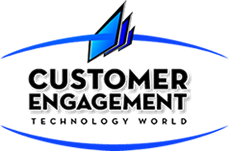Patrick Quinn – President & CEO, PQ Media – “Digital Out-of-Home Media Forecast”
Exclusive look outside of folks at PQ Media at new data & research (4th edition will be published in February 2011)
Lots of data to digest, hard to keep up, but good stuff.
He asked a question of the audience – how many of you represent (audience of about 20):
- Venues – 1
- Brand – 0
- Agencies – 3 (inc. me)
- Integrators – 3
- Network Operators – majority
DOOH has one of the best chances to succeed as a new media platform
3 Key Drivers of Economic Growth
- Innovation & technical support
- Changes in consumer demand
- Drives ad & marketing spending
PQ Media has ID’d 3 phases of successful new media:
- Gold Rush
- Shakeout
- Breakout
FACTOID OF THE DAY – How fast each major ad network reached $1B in revenue – DOOH is #3 behind Internet (5 years) & mobile (7 years) – DOOH (9 years)
Gold rush phase for DOOH – 2003 – 2008
Shakeout occurred 2008 – 2010 (they believe the shakeout will continue through 2011)
Breakout phase will occur after 2011. Few market leaders control the industry. About 70% of Digital Place-Based Networks & Digital Billboards/Signs are both dominated by the top 10 operators. For the breakout to really occur, you need to see more than 70%. Consolidation needs to still occur and it is expected.
DOOH Media definition (according to the them):
DOOH media includes advertising vehicles developed through new technology to target more mobile and captive consumers in less cluttered locations outside the home. DOOH media use innovative concepts designed for greater consumer engagement, participation and brand activation.
They break DOOH down into 2 categories:
Digital Place Based Networks (integrate targeted entertainment and/or info programming with ad pods narrowcast on digital video screens) & Digital Billboards/Signs (advertising-only messages through screens equipped with LED or LCD techs)
DOOH Industry snapshot:
- 267 digital place-based operators & aggregators
- 426 digital place-based networks in five venue categories
- Over 1 MM video screens installed nationwide
- 117 digital billboard & signage operators
- About 4,000 digital billboards & signs in 4 location categories
Total DOOH grew 1.5% in 2009 to $1.8B
Where does OOH fit in the overall ad spend? – only 4% of ad spend
DOOH represented 25% of that small percentage in OOH
Key Trends:
- Magic number for DVR penetration – 35% in DMA for it to reach a point where TV will no longer become as powerful ad network (hmmm)
- 44% media consumption occurs outside of the home
- DOOH media is attractive to brands because it offers ads up to targeted audiences in captive venues for extended periods of time
- DOOH is becoming part of integrated media solutions
- More market leaders providing broader target audience scale
- Operators investing in sales and marketing staff, strategic and tactical improvements
Key DOOH research:
- 70% interaction w/ digital signs per month
- Digital signage perceived as more engaging than static
- Interactivity is promoting longer dwell time
- Digital billboards generated 6-10x more revenue per month than static
Challenges:
- Content & creative needs to improve with standards to increase engagement
- Agencies are seeking methods to better plan and buy DOOH more efficiently
- Remains cost-prohibitive for many DOOH network operators to develop local sales teams
- Capex for new and improved technologies continue to impact profit margins
- Metrics still need improvement to meet agency/brand requirements and compete w/ other media
- Competition for other merging media remains stiff
- DOOH operators need to embrace and develop strategies to capitalize on emerging mobile and social media options. Smartphones – 20% of subs in 09 rising to 50% by 2014
- New techs driving mobile/DOOH convergence – SMS, Bluetooth, QR codes, LBS, Graphic Recognition (camera) – all of the things I talk about being enabling technologies
Preliminary Forecast:
- Place-Based Networks – 15% – 16% growth in 2011
- Digital Billboards/Signs – 18% – 19% growth in 2011
- Overall DOOH – 16% – 17% growth in 2011
Key growth drivers – better audience metrics, improved sales/mktg tactics, national scale more widely available, expansion into new venues, integration w/ mobile and social, emerging technologic enhancements (ie. 3D)
Questions/Answers:
Captivate – largest in-office network in the US. Wall St. Journal Network – 2nd largest.
Largest opportunity – Cinema is the gold-standard. National CineMedia is the largest (backed by 3 major theater owners). Office space, too, is doing well. Skews over 50% women, the alpha-moms.
R&D, where’s it being spent? – advertisers – GPS, mobile web, proximity-based (hmmmmmmm)
How many networks have national footprint? Very few.
Nut – clearly, advertisers are seeing the value in DOOH networks – they’re using it as an Awareness channel. I don’t think they’re recognizing the full potential (interactivity, personal experiences), but I also don’t think it will take them long to get on board.
Word of the session – Alpha Mom.
